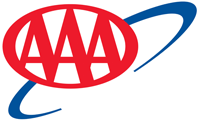4 out of 5 drivers report better gas mileage than EPA estimates
 Tampa, FL – Motorists looking to save a few dollars on gas mileage can do so by making a few adjustments to their driving habits.
Tampa, FL – Motorists looking to save a few dollars on gas mileage can do so by making a few adjustments to their driving habits.
In a study conducted by AAA, 81 percent of drivers reported higher gas mileage than EPA estimates, while only 16 percent reported lower fuel economy than EPA ratings.

A few ways to determine the true gas mileage of your vehicle are:
- Log the odometer reading and gallons of fuel purchased each time you fill up. Subtract the most recent odometer reading from the previous number to get the number of miles driven. Divide the number of miles driven by the number of gallons of fuel purchased to determine your miles-per-gallon.
- Use the Fuel Cost Calculator on AAA’s Daily Fuel Gauge Report website to calculate your mileage and fuel cost from Point A to Point B. Select your vehicle type, and the calculator will use current fuel prices to track your mileage and tally fuel costs.
- Refer to the trip computer built into the vehicle. These on board systems are generally accurate, but some can be a bit optimistic. A month of manual tracking would identify any anomalies.
“EPA estimates are a good starting point for fuel efficiency, but driving habits contribute heavily to your overall MPG ,” said Josh Carrasco, spokesman, AAA – The Auto Club Group. “Reducing speed, avoiding jack rabbit starts, and checking your tire pressure can go a long way in increasing your fuel efficiency.”
Consumers in the market for a new vehicle should carefully consider EPA ratings before making their final decision. Over a 15,000 mile period, a vehicle with an EPA rating of 25 mpg can save 400 gallons of fuel and $1464, when compared to an SUV getting 15 mpg, estimating gas at $3.66 a gallon. That is a very substantial savings. However, a car that gets 35 mpg compared to 45 mpg will only save motorists 95 gallons of gas and $348 over the same distance.
The type of vehicle you drive determines the general range for fuel economy, but how you drive has a significant impact on the final MPG numbers.
To maximize fuel efficiency, drivers should keep these tips in mind:
- Accelerate gently: The harder you accelerate, the more fuel you consume. To maximize your fuel efficiency, take five seconds to accelerate your vehicle up to 15 mph from a stop.
- Anticipate traffic: Look ahead to avoid sudden stops and starts.
- Avoid high speeds: Vehicles operate most efficiently when traveling between 30 mph and 50 mph. Every 5 mph above 50 mph is like paying an additional $ .24 per gallon for gas. When posted speeds permit, slower saves fuel.
- Coast to decelerate: Where possible, coast to slow or stop to avoid unnecessary braking. Use the brakes as necessary to let other motorists know your intentions.
- Maintain a steady speed: Tests have shown that using cruise control in highway driving on level roads can save fuel by maintaining a constant speed.
- Get junk out of the trunk: Excess weight is a drag on fuel economy. Every extra pound reduces fuel economy, and roof-top carriers multiply the effect with additional wind resistance.
- Avoid excess idling: Turning off the ignition while waiting in a slow drive-through lane or picking up a child after school can save as much as three cents in fuel-per-minute. Automatic stop-start systems automatically handle ignition when idling and can deliver city driving miles-per-gallon increases of around 7 percent.
- Be sure your tires are properly inflated. You can lose as much as 2 percent of your mileage for every pound your tires are under-inflated.
About The Auto Club Group
The Auto Club Group (ACG) is the second largest AAA club in North America. ACG and its affiliates provide membership, travel, insurance and financial services offerings to approximately 9 million members across 11 states and two U.S. territories including Florida, Georgia, Iowa, Michigan, Nebraska, North Dakota, Tennessee, Wisconsin, Puerto Rico and the U.S. Virgin Islands; most of Illinois and Minnesota; and a portion of Indiana.
ACG belongs to the national AAA federation with nearly 55 million members in the United States and Canada and whose mission includes protecting and advancing freedom of mobility and improving traffic safety.


